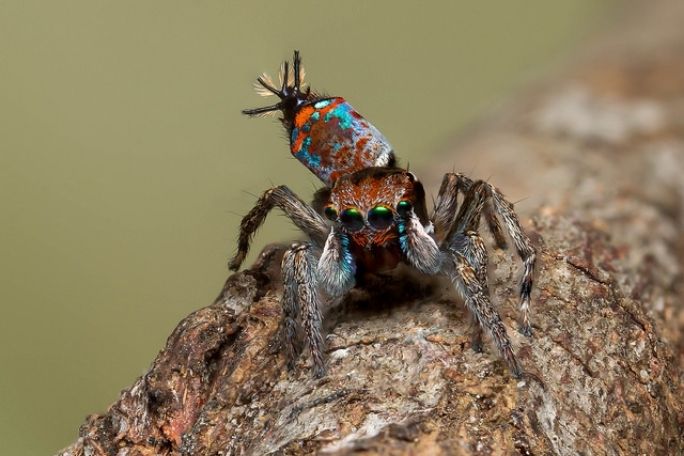Lesson summary
In this lesson, students will understand the steps needed to undertake a bush blitz in their schoolyard to find what animals live there. Students will work in small groups to observe, record and report back on what they find in the microhabitats in their schoolyard.
Learning intentions:
Students will...
- understand why a bush blitz is important
- understand the role of teamwork in collecting animals
- understand the role of entomologists.
Success criteria:
Students can...
- explain how to carry out a bush blitz
- describe how to use an insect collection method safely
- actively contribute to a team environment while collecting insects
- evaluate and discuss improvements to the scientific process
- identify what has been collected
- share and compare findings with another group.
Lesson guides and printables
Curriculum links
Select your curriculum from the options below.
Lesson details
Curriculum mapping
Australian Curriculum content descriptions:
Year 5 English:
- Use appropriate interaction skills including paraphrasing and questioning to clarify meaning, make connections to own experience, and present and justify an opinion or idea (AC9E5LY02)
- Plan, create, rehearse and deliver spoken and multimodal presentations that include relevant, elaborated ideas, sequencing ideas and using complex sentences, specialist and technical vocabulary, pitch, tone, pace, volume, and visual and digital features (AC9E5LY07)
Year 5 Science:
- Examine how particular structural features and behaviours of living things enable their survival in specific habitats (AC9S5U01)
- Write and create texts to communicate ideas and findings for specific purposes and audiences, including selection of language features, using digital tools as appropriate (AC9S5I06)
Year 6 English:
- Use interaction skills and awareness of formality when paraphrasing, questioning, clarifying and interrogating ideas, developing and supporting arguments, and sharing and evaluating information, experiences and opinions (AC9E6LY02)
- Analyse how text structures and language features work together to meet the purpose of a text, and engage and influence audiences (AC9E6LY03)
Year 6 Science:
- Investigate the physical conditions of a habitat and analyse how the growth and survival of living things is affected by changing physical conditions (AC9S6U01)
- Write and create texts to communicate ideas and findings for specific purposes and audiences, including selection of language features, using digital tools as appropriate (AC9S6I06)
Syllabus outcomes: EN3-1A, EN3-8D, ST3-10LW, ST3-4WS, ST3-11LW.
General capabilities: Critical and creative thinking, Literacy, Personal and social capability
Cross-curriculum priority: Sustainability
Relevant parts of Year 5 English achievement standards: Students contribute actively to class and group discussions, taking into account other perspectives
Relevant parts of Year 5 Science achievement standards: Students analyse how the form of living things enables them to function in their environments. Students predict the effect of changing variables when planning an investigation and communicate their ideas and findings using multimodal texts.
Relevant parts of Year 6 English achievement standards: Students contribute actively to class and group discussions, using a variety of strategies for effect
Relevant parts of Year 6 Science achievement standards: Students describe and predict the effect of environmental changes on individual living things. Students design investigations into simple cause-and-effect relationships, and construct multimodal texts to communicate ideas, methods and findings.
This lesson is part of the wider unit of work Backyard Bush Blitz – Years 5 & 6
Resources required
- A2 birds eye maps of school grounds
- Beat sheets
- Berlese funnel traps
- Recorder Worksheet
- Reporter Worksheet
- Clipboard
- Insect nets
- iPad for each group (optional)
- Magnifying box
- Magnifying glass
- Paper
- Pencils (coloured and writing)
- Pens
- Pitfall traps
- Pooter
- Ruler (for each group)
- String (for each group).
- Student Worksheet
- Watch
Skills
This lesson is designed to build students’ competencies in the following skills:
- Communication
- Creativity
- Critical thinking
- Cultural understanding
- Empathy
Additional info
Time required: Minimum 3 hours
Level of teacher scaffolding: Low – minimal scaffolding if the class has completed the previous lessons. High if teachers have not completed the previous lessons
This is an original Cool+ lesson.


Welcome back!
Don't have an account yet?
Log in with:
Create your free Cool.org account.
Many of our resources are free, with an option to upgrade to Cool+ for premium content.
Already have an account?
Sign up with:
By signing up you accept Cool.org's Terms and Conditions(Opens in new tab) and Privacy Policy(Opens in new tab).